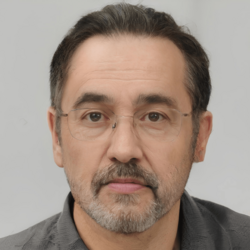General Secretary of the CPSU (TheodoresTomfooleries): Difference between revisions
mNo edit summary |
m (I-I started this company...) |
||
| Line 32: | Line 32: | ||
| unofficial_names = Gensek | | unofficial_names = Gensek | ||
}} | }} | ||
The General Secretary of the Communist Party of the Soviet Union ({{wp|Russian language|Russian}}: Генеральный секретарь ЦК КПСС; {{wp|Romanization of Russian|tr.}} '' | The General Secretary of the Communist Party of the Soviet Union ({{wp|Russian language|Russian}}: Генеральный секретарь ЦК КПСС; {{wp|Romanization of Russian|tr.}} ''Gyenyeral'nyiy syekryetar' TSK KPSS'') is the leader of the [[Communist Party of the Soviet Union (TheodoresTomfooleries)|Communist Party of the Soviet Union]], the {{wp|Vanguardism|vanguard party}} of the [[Soviet Union (TheodoresTomfooleries)|Soviet Union]]. De-facto the position is the highest in both the party and the country, as the General Secretary advises over the policies of the communist party and thus the policies and laws of a nation as a whole. The [[Deputy Secretary of the CPSU (TheodoresTomfooleries)|Deputy Secretary]] is also an important position and often the "Second Secretary" (as it is nicknamed) is considered the pre-eminent successor to the current General Secretary. | ||
Positions similar to the current title of General Secretary were first established in 1917 when {{wp|Elena Stasova}} was promoted as Technical Secretary of the {{wp|Russian Social Democratic Labour Party}}, but it would not be until 1922 that the present title was established. {{wp|Joseph Stalin}} was the first officeholder, though at the time of his promotion (and even at the time of {{wp|Vladimir Lenin|Lenin's}} death) the office was largely bureaucratic and held little power compared to what it would possess in the future. It is generally regarded that the office of General Secretary unofficially became the de-facto office of leadership in the Soviet Union in 1929, and further centralizations of power by Stalin throughout the 1930s and 40s continued this trend. | Positions similar to the current title of General Secretary were first established in 1917 when {{wp|Elena Stasova}} was promoted as Technical Secretary of the {{wp|Russian Social Democratic Labour Party}}, but it would not be until 1922 that the present title was established. {{wp|Joseph Stalin}} was the first officeholder, though at the time of his promotion (and even at the time of {{wp|Vladimir Lenin|Lenin's}} death) the office was largely bureaucratic and held little power compared to what it would possess in the future. It is generally regarded that the office of General Secretary unofficially became the de-facto office of leadership in the Soviet Union in 1929, and further centralizations of power by Stalin throughout the 1930s and 40s continued this trend. | ||
The position was temporarily abolished between 16 October 1952 and 13 September 1953, however it was re-established under the name of First Secretary by {{wp|Nikita Khrushchev}} on 14 September 1953, later renamed back to General Secretary in 1966 at the {{wp|23rd Congress of the Communist Party of the Soviet Union|23rd Congress}}. Little has changed regarding the position's administrative importance since then. | The position was temporarily abolished between 16 October 1952 and 13 September 1953, however it was re-established under the name of First Secretary by {{wp|Nikita Khrushchev}} on 14 September 1953, later renamed back to General Secretary in 1966 at the {{wp|23rd Congress of the Communist Party of the Soviet Union|23rd Congress}}. Little has changed regarding the position's administrative importance since then. | ||
Revision as of 18:53, 27 October 2022
| General Secretary of the Communist Party of the Soviet Union | |
|---|---|
| Генеральный секретарь ЦК КПСС | |
Insignia of the CPSU | |
Flag of the Soviet Union | |
| Style | Comrade General Secretary (Informal) |
| Type | Party leader |
| Status | De-facto leader |
| Abbreviation | General Secretary of the CPSU |
| Member of | Politburo of the CPSU Secretariat of the CPSU |
| Reports to | CPSU |
| Residence | Kremlin Senate |
| Seat | Kremlin, Moscow |
| Appointer | Central Committee of the CPSU |
| Precursor | Position created |
| Formation | 3 April, 1922 |
| First holder | Joseph Stalin |
| Unofficial names | Gensek |
The General Secretary of the Communist Party of the Soviet Union (Russian: Генеральный секретарь ЦК КПСС; tr. Gyenyeral'nyiy syekryetar' TSK KPSS) is the leader of the Communist Party of the Soviet Union, the vanguard party of the Soviet Union. De-facto the position is the highest in both the party and the country, as the General Secretary advises over the policies of the communist party and thus the policies and laws of a nation as a whole. The Deputy Secretary is also an important position and often the "Second Secretary" (as it is nicknamed) is considered the pre-eminent successor to the current General Secretary.
Positions similar to the current title of General Secretary were first established in 1917 when Elena Stasova was promoted as Technical Secretary of the Russian Social Democratic Labour Party, but it would not be until 1922 that the present title was established. Joseph Stalin was the first officeholder, though at the time of his promotion (and even at the time of Lenin's death) the office was largely bureaucratic and held little power compared to what it would possess in the future. It is generally regarded that the office of General Secretary unofficially became the de-facto office of leadership in the Soviet Union in 1929, and further centralizations of power by Stalin throughout the 1930s and 40s continued this trend.
The position was temporarily abolished between 16 October 1952 and 13 September 1953, however it was re-established under the name of First Secretary by Nikita Khrushchev on 14 September 1953, later renamed back to General Secretary in 1966 at the 23rd Congress. Little has changed regarding the position's administrative importance since then.
